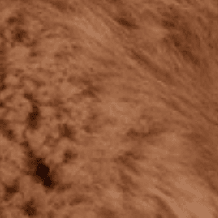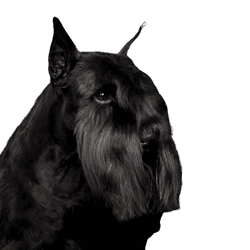
Schnoodle:Royal Poodle and Giant Schnauzer Mix
Schnoodle
Facts & Origin
What is the origin of the Schnoodle?
The Schnoodle is a cross between Schnauzer and Poodle, originally comes from the USA and was first recorded around 1965.
What are the Schnoodle breed characteristics?
The typical Schnoodle combines the boldness of the Schnauzer with the friendliness of the poodle. This dog is alert and active. You should plan a longer walk and play sessions with them every day.
Your Schnoodle will love to learn little tricks. Mental stimulation is just as important as physical exercise.
Many people who buy a Schnoodle to have a companion dog quickly start enjoying activities with them such as agility, dog dancing or flyball. By working together, your relationship is also strengthened in the process.
Like the poodle, the Schnoodle does not undergo an annual hair change.
You can keep your Schnoodle in the apartment. Though it would be nice if you have a garden or yard as an outside area.
What is the average lifespan of a Schnoodle?
Your Schnoodle can reach an age of 12 to 15 years.
| Alternate Name | - |
| Origin | Germany |
| Life expectancy | 12 - 15 years |
| Care requirements | high-maintenance |
| Activity level | average - high |
| FCI group | not recognised |
| AKC group | not recognised |
| KC group | not recognised |
More Giant Schnauzer mixes
Attitude, character and temperament of the breed
What are typical character traits of Schnoodles?
These fur noses are friendly, intelligent, affectionate and playful. They love children and are friendly to strangers and other animals.
This makes them excellent family dogs.
Character
Usage

Health and breeding information
What are typical diseases of Schnoodles?
As a hybrid dog, Schnoodles are robust and less prone to illness. The smaller specimens, like all small dogs, they can have problems with their kneecaps (patella luxation).
What needs to be considered regarding Schnoodle breeding?
The Schnoodle is a hybrid dog, not a breed of dog. Concerning Schnoodle breeding, both original breeds have to be mated each time. This is the only way to obtain the desired characteristics (1st Mendelian law, F1 generation). If hybrid dogs (Schnoodle) would be used for continued breeding, the characteristics of the offspring, such as coat quality, character or appearance, would vary greatly. ( 2nd Mendelian law, F2 generation ).


Appearance and coat of the Schnoodle
Schnoodles are square-built dogs. Their snout usually reveals how much percentage of poodle they have in them. Their large, round eyes and V-shaped ears make a friendly impression.
Their coat is of medium length, wavy to crimped or curly. There are Schnoodles with soft fur as well as with rough, shaggy fur. It always depends on whether the Schnauzer or the Poodle part is predominant.
Their fur must be brushed regularly. You should get already get your Schnoodle used to this from puppy age.
There are many coat colours in Schnoodle breeding:
- White
- Apricot
- Different shades of brown
- Gray
- Black
- Spotted
Do not choose your Schnoodle puppy by colour. It is better to choose a dog that best suits you in regards to their character.
How big is a Schnoodle?
This is very dependent on the size of the parent animals. If miniature Schnauzers are crossed with miniature Poodles, you will end up with a small Schnoodle. Large Schnoodles are created by crossing a Giant Schnauzer with a Giant Poodle.
If you want to buy a Schnoodle, you have a large selection. These dogs can reach a height between 30 to 60 cm.
How much does a Schnoodle weigh?
Schnoodles weigh between 10 and 35 kg. Here, too, it depends on the parent animals. Additionally there are also different variations.
| Miniature Schnauzer | Toy poodle |
| Standard Poodle | Miniature Schnauzer |
| Giant Schnauzer | Giant Poodle or Royal Poodle |
| Standard Poodle | Giant Schnauzer |
| etc. |
|
| Fur length | short |
| Fur | curly - rough-haired |
| Ear shape | Tilt-ear |
| Tail | short - lang |
| Anatomy | square |
| Size ♀ | 25 - 45 cm |
| Weight ♀ | 10 - 35 kg |
| Size ♂ | 25 - 45 cm |
| Weight ♂ | 10 - 35 kg |
| Suitable For | suitable for allergy sufferers, Beginner |
Colors




Known Diseases
Patellar luxation
Patellar luxation is the term used to describe a displacement of the kneecap, which is one of the most common causes of lameness in dogs.
FAQ
-
A Giant Schnoodle costs about 1500 Euro.
-
There are very many different poodle mixes, as it is considered hypoallergenic and is very family friendly. Besides the Schnoodle, there are Goldendoodle, Labradoodle, Havapoo and many more.
Useful Articles
You can find articles that might interest you in the dogbible blog to match your favorite breed.
Visit our magazineto stay up to date on dog trends.
To find out more, view our Privacy Policy
Find here the breed that suits you and find out what character traits it has. Here you can also learn more about the origin, size and weight of your favorite breeds.
Matching your favorite breed, you'll find articles that might interest you on the dogbible dog blog.
Bach flowers for dogs - an overview and tips
3 tips for snowshoeing with dog
Lyme disease in dogs - symptoms & treatment and why its so dangerous











